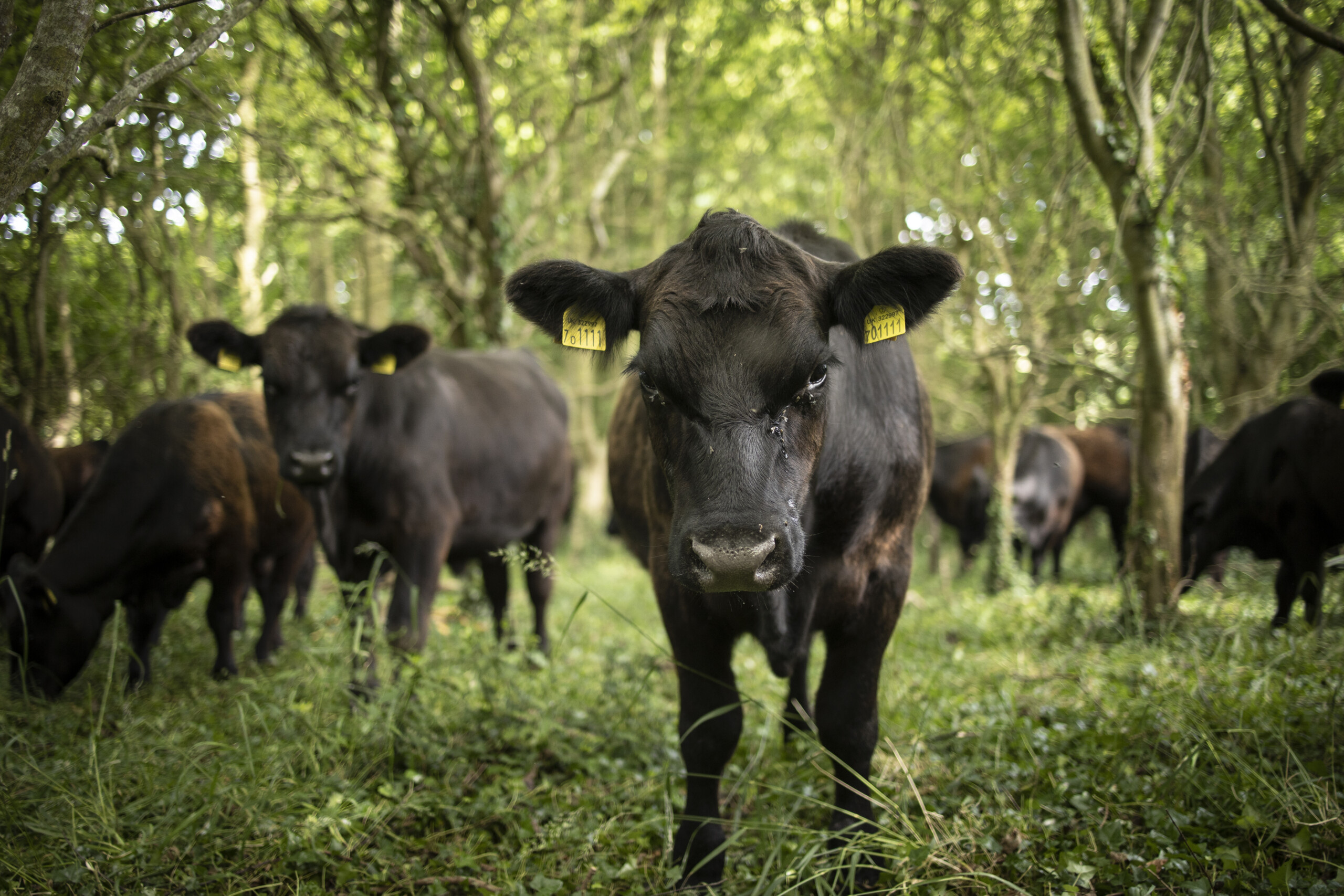Introduction
Raising livestock is an important part of agriculture and food production around the world. However, conventional livestock farming methods can have negative environmental impacts if not properly managed. As concerns about sustainability and our impact on the planet grow, farmers and consumers alike are looking for ways to produce meat, dairy and other animal products while protecting the environment for future generations. Thankfully, there are many practical and profitable sustainable practices that farmers can adopt to raise livestock in a more eco-friendly manner.
In this blog post, I will explore some key sustainable farming techniques related to livestock and discuss how farmers are implementing them on their operations. My goal is to provide an informative yet approachable overview of this important topic. I hope readers come away with a better understanding of how livestock agriculture can balance productivity with environmental stewardship through practical and scientifically backed best management practices.
Managing Manure for Nutrient Recovery
One of the biggest environmental concerns related to conventional livestock farms is manure management. Improperly stored or applied animal waste can contaminate waterways and soil through runoff. However, manure is also a valuable resource that provides nutrients plants need to grow. Sustainable farmers view manure as a renewable fertilizer rather than a waste product.
Several techniques allow farmers to capture and utilize the nutrients in manure in an eco-friendly way. For instance, many farmers construct covered manure storage facilities to collect livestock waste. This prevents rainfall from washing pathogens and excess nutrients into waterways. The manure can then be regularly emptied from the storage and land applied according to soil tests, ensuring crops receive only the nutrients they can effectively utilize.
Composting manure is another popular option that offers nutrient benefits. As manure breaks down through an active composting process, nitrogen and phosphorus become stabilized and less prone to runoff. Composted manure also improves soil structure and fertility long-term when tilled into fields. Some livestock farms even generate compost specifically tailored to different crops' nutrient requirements.
Newer emerging manure treatment methods like anaerobic digestion are also gaining attention from farmers looking to diversify their nutrient management approach. Digesters capture methane gas emitted during manure decomposition, converting it into a renewable energy source. The remaining digestate has lower concentrations of nitrogen and phosphorus but can still replenish soils when land applied. Digested manure also composts more quickly.
Through diligent storage, treatment and application of manure, sustainable farmers effectively recycle nutrients rather than seeing them as waste. This protects surrounding environments while boosting soil health and fertility naturally over time.
Conserving Water and Protecting Quality
Livestock agriculture depends upon access to clean water resources for drinking and sanitation purposes on farms. However, overuse or contamination of surface and groundwater can occur without proper management strategies. Leading sustainable livestock farmers make conserving and protecting water a high priority.
For example, some channel livestock drinking water directly from natural ponds, streams or wells using gravity-flow systems rather than electric pumps. This avoids energy usage as well as preventing backflow or spills that could introduce pathogens to water sources. Cross-fenced riparian buffers also create natural barriers, restricting livestock from directly accessing vulnerable shorelines and keeping their waste out of lakes and rivers.
Water conservation is another focus. Low-flow automatic waterers regulate animal intake to necessary levels while preventing wasteful overflow. Captured wastewater from facilities gets safely directed to manure storage rather than drainage pipes. New center-pivot sprinkler systems also irrigate pastures with precise, drop-by-drop application and minimal evaporation loss versus open flooding.
On the protection side, sediment and pollution runoff risks receive ample control. Wide filter strips of native perennial plants absorb and filter impurities in rainfall flowing from cattle yards, rooftops and other surfaces before entering tributaries. Upgraded fencing keeps livestock away from sensitive riparian areas altogether during rainy seasons when impacts could be greater.
Through applying multiple practices in harmony, forward-thinking livestock farmers conserve this critical resource while safeguarding water quality for all downstream users long into the future.
Regenerative Grazing for Soil and Pasture Health
Managed grazing presents opportunities for positively impacting soil health, plant biodiversity and the entire pasture ecosystem through sustainable techniques. Some farmers implement planned, high-intensity grazing rotations that mimic natural herd movements and support new grass growth.
For example, paddock divisions allow frequent relocations of cattle every one to three days according to forage heights and regrowth rates. This minimizes overgrazing while maximizing intake of fresh herbage. Rest periods of three to four weeks let grazed areas recover before re-entry by livestock.
Moving portable fence lines instead of feeding raised supplements further instills natural behaviors in cattle herds and builds soil organic matter through constant hoof action and manure deposition across whole fields. Not over-staying their welcome in any location prevents over-compaction and erosion issues compared to continuous grazing systems.
Some forward-thinking producers even sow pasture mixes emphasizing deep-rooted perennial grasses, legumes and other forbs to outcompete weeds naturally and provide biomass 12 months annually with less dependence on fertilizers and bought feeds. Native plant diversity supports greater biodiversity of ecosystems too, from pollinators to grassland birds and small mammals.
In the end, properly managed regenerative grazing delivers benefits like carbon sequestration, improved water infiltration and nutrient cycling that build overall ranch resiliency and profitability through healthier landscapes. When maintained deliberately yet flexibly according to natural seasonal fluctuations, these closed-loop systems sustain livestock and land together sustainably.
Reducing Environmental Footprint through Efficiency
While certain practices yield environmental gains directly, sustainably minded producers also optimize livestock systems for efficiency's sake in lowering external impacts. Every kilogram of meat, gallon of milk or dozen eggs produced with fewer inputs like feed, water, energy and antibiotics constitutes an indirect "green" success.
Genetic selection plays a role, as farmers choose breeding stock not only for productivity but feed conversion, mothering ability, health and hardiness traits requiring less maintenance overall. Low-stress animal handling also improves welfare and growth rates and reproductive performance.
Energy efficiency receives attention via replacement of outdated facilities and equipment. LED lighting, enhanced insulation, variable speed ventilation fans and energy audits all shrink the carbon footprint of heated barns and dairies. Recovered methane from anaerobic digesters or solar panel installations further offset fossil fuel reliance.
Precision technologies also aid nutrient and pest management decisions. GPS-enabled application vehicles and soil sensors guide fertilizer precisely to assessed need zones within lush pastures versus broadcasting broadly. Targeted scouting with drones rapidly finds disease or insect problems treated only in affected areas rather than sloppily spraying whole sites.
While not always cheap, these types of operational upgrades grant double savings in lower production costs and lessened environmental liabilities long-term as more livestock agriculture integrates progressive sustainability practices coast to coast and globally.

Creating Transparency through Certification
To communicate their dedication to ethical, environmentally responsible production methods, numerous farms achieve third party certification under various standards. This provides assurance to an increasingly conscientious consumer base while setting clear goals for continual improvement.
Popular ruminant livestock certifications address pasture access, antibiotic use reduction, animal welfare benchmarks, habitat protection, manure management and more issues. Programs range from minimum entry points to advanced levels furthering sustainability practices and natural resource stewardship over time.
Participating operations subject themselves to annual audits verifying ongoing compliance and identifying areas for progressive enhancement year after year. Though adding paperwork responsibilities, certification benefits producers through brand differentiation, market premiums and participation in supply chain sustainability initiatives or incentive programs supported by retail partners.
Certification also motivates multi-generational ranchers and farmers entrenched in tradition to formally evaluate methods impacting ecosystems health long-term, embracing innovation from updated understanding like holistic planned grazing rather than resisting change outright. Together with pioneer "early adopters," they help drive positive transformation of entire agricultural industries toward environmental responsibility as the "new normal."
Moving Forward with Continuous Learning
As the sustainable agriculture movement progresses rapidly, leaders understand maintaining openness to new knowledge will determine long-run success more than entrenching current paradigms. Today's best practices may evolve tomorrow through unforeseen scientific gains, altered climate conditions or emerging societal values.
For this reason, top progressive producers stay plugged into research advances through trade associations and land-grant extension programs. These organizations spread word of impactful innovations piloted at experimental stations nationwide, empowering adoption of profitable solutions spreading environmental enhancements efficiently among rural communities and beyond.
Producers themselves may partner in on-farm experiments evaluating crop rotations, cover cropping, rotational grazing intervals or compost applications specific to regional soils and weather patterns. Cooperatives combine analytical power through shared resources while mentoring relationships spread experience down to start-ups.
Information age technologies themselves supply continuous education platforms through virtual seminars, e-learning and remote troubleshooting assistance available 24/7 via smartphone. This borderless learning accommodates modern schedules better than conventional classroom settings alone ever could.
By embracing constant self-improvement through science and collective problem-solving, the agricultural stewards of tomorrow stay responsive to ever-changing resource demands, economic headwinds and societal priorities in sustainable ways. Their willingness to thoughtfully yet boldly pioneer newer, greener frontiers ensures our abundance now without compromising future livelihoods.
FAQs
FAQ 1: What are some examples of regenerative grazing techniques?
Some key regenerative grazing techniques include:
- Planned grazing rotations that subdivide pastures and frequently move livestock every 1-3 days to allow forage regrowth
- Increasing biodiversity by sowing diverse mixes of deep-rooted grasses, legumes and other forbs
- Mimicking natural herd movements by using portable electric fencing instead of supplemental feeding
- Allowing adequate rest periods of 3-4 weeks between grazings to rebuild soil organic matter
- Optimizing stocking densities to prevent overgrazing or compaction of soils
FAQ 2: How does manure management impact sustainability?
Improper manure management can lead to water and soil contamination through runoff. However, manure is also a valuable organic fertilizer resource. Sustainable practices include:
- Constructing covered manure storage to prevent rainfall runoff
- Regularly emptying storage and applying manure according to soil tests for optimum nutrient levels
- Composting manure to stabilize nutrients and improve soil fertility long-term
- Emerging technologies like anaerobic digestion to capture methane for energy while producing digestate fertilizer
FAQ 3: What role does water stewardship play?
Sustainable livestock farms carefully conserve and protect water resources by:
- Using gravity-flow distribution from natural sources instead of energy-intensive pumping
- Installing riparian buffers and fencing to restrict livestock access
- Adopting water-efficient systems like automatic low-flow waterers
- Employing techniques like constructed wetlands to filter runoff before it enters waterways
- Carefully managing irrigation via center-pivot sprinklers or avoiding open flooding
FAQ 4: How can certification benefit farmers and the environment?
Certification provides transparency by verifying ethical and sustainable practices through third-party audits. Benefits include market differentiation, price premiums, supply chain participation, and incentives. It also encourages continual improvement, innovation adoption, and driving positive industry-wide change over time. Producers welcome accountability and opportunities to enhance practices for ecosystem health.
FAQ 5: What role does efficiency play in sustainable livestock agriculture?
Implementing efficient systems lowers production costs while shrinking environmental footprints. This includes advances like genetic selection, low-stress handling practices, energy-efficient facilities/equipment, precision technologies for input application, renewable energy sources, and general optimizations that boost productivity with fewer overall inputs.
FAQ 6: How important is ongoing learning to sustainability?
Top producers understand new knowledge will drive long-term success more than rigidly clinging to outdated paradigms. They stay actively engaged in research through extension, pilot innovative projects on their own operations, and readily adopt proven practices proven effective regionally. Information technologies also greatly expand access to virtual seminars and remote expertise constantly supporting self-improvement needed to address changing demands over time.
Conclusion
In conclusion, sustainability in livestock farming requires comprehensive systems thinking across all operational areas from animal care to land, water and financial stewardship. Through dedication to science-based best practices, optimization mindsets and ongoing learning, progressive agricultural communities worldwide can successfully raise high-quality animal products today without compromising environmental resilience or future food security. With shared progress, livestock agriculture remains a thriving component of a greener world that nourishes people and planet harmoniously for generations to come.


